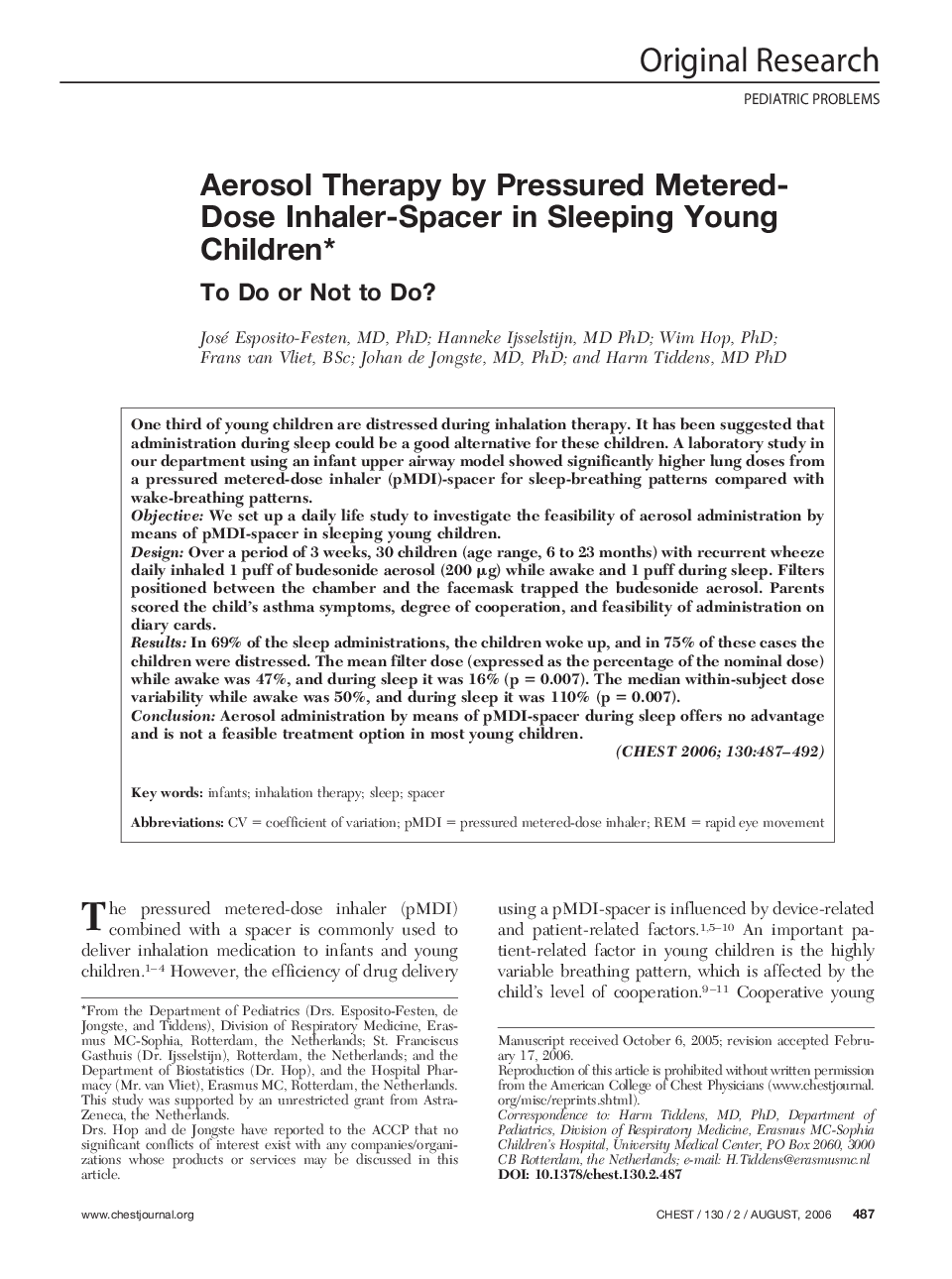| Article ID | Journal | Published Year | Pages | File Type |
|---|---|---|---|---|
| 2905651 | Chest | 2006 | 6 Pages |
One third of young children are distressed during inhalation therapy. It has been suggested that administration during sleep could be a good alternative for these children. A laboratory study in our department using an infant upper airway model showed significantly higher lung doses from a pressured metered-dose inhaler (pMDI)-spacer for sleep-breathing patterns compared with wake-breathing patterns.ObjectiveWe set up a daily life study to investigate the feasibility of aerosol administration by means of pMDI-spacer in sleeping young children.DesignOver a period of 3 weeks, 30 children (age range, 6 to 23 months) with recurrent wheeze daily inhaled 1 puff of budesonide aerosol (200 μg) while awake and 1 puff during sleep. Filters positioned between the chamber and the facemask trapped the budesonide aerosol. Parents scored the child's asthma symptoms, degree of cooperation, and feasibility of administration on diary cards.ResultsIn 69% of the sleep administrations, the children woke up, and in 75% of these cases the children were distressed. The mean filter dose (expressed as the percentage of the nominal dose) while awake was 47%, and during sleep it was 16% (p = 0.007). The median within-subject dose variability while awake was 50%, and during sleep it was 110% (p = 0.007).ConclusionAerosol administration by means of pMDI-spacer during sleep offers no advantage and is not a feasible treatment option in most young children.
